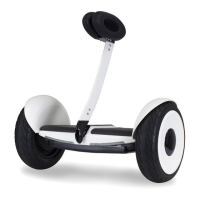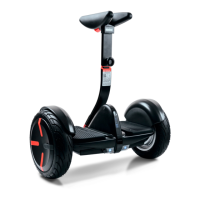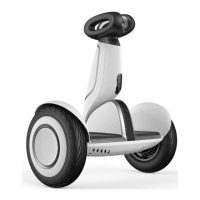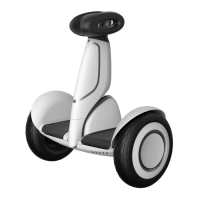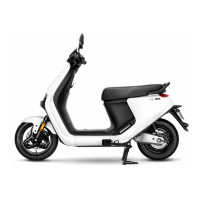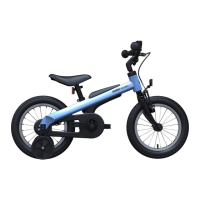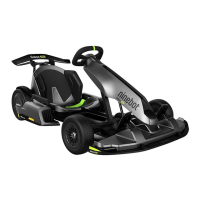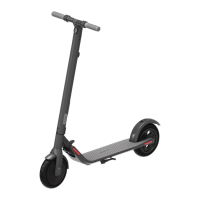13 / 14
8) Do not ride through puddles or any other (water) obstacles. In such a case please lower your speed and
bypass the obstacles, and do not carry any passengers, and do not carry a child, and do not ride when
pregnant.
9) Do not touch the hub motor after riding because it can get hot.
4.2 Design Requirement
The controller can read the battery temperature from Battery Management System, and the BMS can limit the
highest battery output current (Bus Current); Two Temperature Sensors are on the surface of the battery cell.
i) Battery Cell Maximum surface temperature is safe below 158 ˚F(70℃);
ii) If the cell surface temperature < +107.6 ˚F(42℃), the maximum Bus Current is 25A
iii) If the cell surface temperature reaches 107 ˚F(42℃), start to reduce the maximum current
iv) If the cell surface temperature reaches 122 ˚F(50℃), the output maximum current reduces to 6A.
v) If the cell surface temperature reaches < 14˚F (-10℃), BMS will turn off the battery output. When
the battery is shut down, the scooter loses the power.
vi) There is 41 ˚F(5℃) temperature difference designed in buffer between the Shut Down temperature
and the Battery Cell Maximum Surface Temperature.
vii) When the controller receives the BMS feedback with the temperature out of the range of -4 ˚F ~ +158
˚F(-20℃~70℃), the system will prompt the error code 39#, indicating that the BMS temperature is
reported incorrectly, or over-temperature cut off function failure. And If the battery is shut down,
even when the temperature falls back under 149 ˚F(65℃), the system does not boot automatically.
When the scooter is rebooted again, and the error code 39# will be disappeared.
Remark: We recommend stopping operating when the Ambient Temperature is over 104˚F(40℃).

